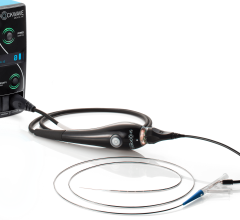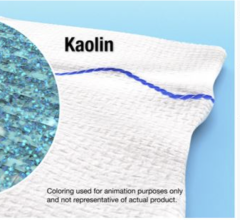
September 20, 2019 — BioTrace Medical Inc. announced the company’s key activities at the 31st annual Transcatheter Cardiovascular Therapeutics (TCT) conference, which will take place Sept. 25-29, 2019, in San Francisco.
The company’s Tempo Temporary Pacing Lead will be featured in a breakfast symposium titled “Keeping the Rhythm with the Tempo Lead: Safety, Stability and Ambulation for Transcatheter Aortic Valve Replacement (TAVR) and Other Cardiac Procedures,” which will be chaired by Stanley J. Chetcuti, M.D., director of the cardiac catheterization laboratory at the University of Michigan Health System, and Tamim M. Nazif, M.D., director of clinical services for the Structural Heart & Valve Center at NewYork-Presbyterian/Columbia University Medical Center.
The symposium will feature recent clinical experience from several leading U.S. structural heart centers, highlighting the safety and efficacy of the Tempo Lead, its use in TAVR procedures, and its positive impact on facilitating post-TAVR patient ambulation outside of the ICU and CCU. The session will also provide an opportunity for hands-on demonstrations.
Nazif will discuss NewYork-Presbyterian/Columbia University Medical Center’s experience using the Tempo Lead during his presentation titled “Conduction Disturbances After TAVR: Current Thinking and Clinical Relevance.” The Tempo Lead will also be utilized during live case broadcasts from NewYork-Presbyterian/Columbia University Medical Center.
Additionally, the company announced the publication of the results of a U.S. multi-center study of 269 cardiac procedures, predominantly TAVR, in Catheterization and Cardiovascular Interventions.[2] The results confirm the Tempo Lead is safe and effective for temporary cardiac pacing, provides stable peri- and post-procedural pacing support, and facilitates post-procedure ambulation.[1] The Tempo lead was successfully positioned and achieved pacing in 264 of 269 patients (98.1 percent). Two patients (0.8 percent) experienced loss of pace capture. Procedural mean pace capture threshold (PCT) was 0.7 ± 0.8 mA. There were no safety events, including perforations, pericardial effusions or sustained device-related arrhythmias. The Tempo lead was left in place post-procedure in 189 patients (71.6 percent) for a mean duration of 43.3 ± 0.7 hours with a final mean PCT of 0.84 ± 1.04 mA. With the Tempo lead in place, 159 of 189 patients (84.1 percent) mobilized from bed to chair at a minimum, and 134 patients (70.8 percent) ambulated without any restrictions related to the pacing lead. There were no lead dislodgments or loss of pace capture events for this group of 189 patients.
The study included procedures performed at six leading U.S. centers: NewYork-Presbyterian/Columbia University Medical Center, University of Michigan Health Center, Riverside Methodist Hospital/OhioHealth, Cleveland Clinic Heart & Vascular Institute, Intermountain Medical Center and Yale New Haven Hospital.
Since receiving FDA clearance, the Tempo Lead has been used in more than 4,500 U.S. procedures, with a safety and performance profile superior to conventional temporary leads, according to BioTrace Medical, including a 0.04 percent cardiac perforation rate and a 0.04 percent dislodgment rate with loss of pace capture.[3]
For more information: www.biotracemedical.com
References
1. Nazif T.M., Chen S., Codner P., et al. The initial U.S. experience with the Tempo active fixation temporary pacing lead in structural heart interventions. Catheter Cardiovasc Interv. 2019;1–6. https://doi.org/10.1002/ccd.28476
2. Nazif T.M., Chen S., Codner P., et al. The initial U.S. experience with the Tempo active fixation temporary pacing lead in structural heart interventions. Catheterization and Cardiovascular Interventions, published online Sept. 2, 2019. https://doi.org/10.1002/ccd.28476
3. Company data on file as of September 2019


 May 01, 2025
May 01, 2025 








